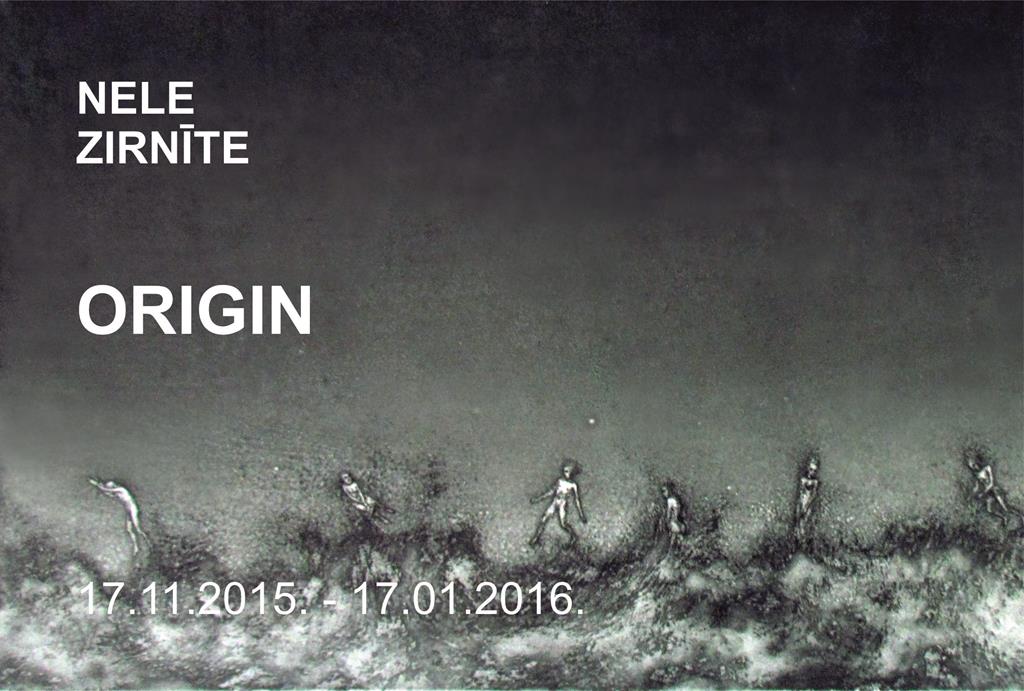Nele Zirnīte ORIGIN

NELE ZIRNĪTE
ORIGIN
Nele Zirnīte’s solo exhibition “Origin” is her dedication to all artists – members of the society “Oforta ģilde“ [Etching Art Guilde] – who like Nele continue to develop etching art and try to blow a new breath into this ancient technique, simultaneously keeping the traditions alive.
Works displayed at this exhibition mark the beginning of a new period in Nele Zirnīte’s creative life, introducing greater colorfulness, vitality and multiformity. The extremely high artistic level of Nele Zirnīte’s works, achieved during the long processes of experimenting in order to obtain the desired result, fascinates and invites a viewer to have a deeper insight in them, and erases the boundaries between dimensionality and plane, time and space.
Nele Zirnīte was born in Lithuania in May 27, 1959. From 1978 to 1982 she studied at Vilnius Art Institute, but in 1982 Nele moved to Latvia and until 1984 continued her studies at the Department of Graphic Art in the Art Academy of Latvia. Nele has obtained the qualification of a graphic artist and teacher in the speciality of graphic art. In 1988, the artist joined the Latvian Artists Association. In 2000, she received MA degree at the Art Academy of Latvia, and she has been on the board of Latvian Artists Association (1999 – 2005; 2008 – 2013). The graphic artist took part and worked in the field of Latvian art by actively arranging and participating in exhibitions as well as working in the civic organization “Grafikas kamera” [Graphic Art Chamber], and was also head of the etching studio of the Latvian Artists Union.
Along with her creative work she did pedagogical work by being a lecturer at the Art Academy of Latvia from 1995 to 2003 and at the Christian Academy of Latvia since 1995. The artist is also socially active: she leads and coordinates projects (“The face of Graphic Art”, “Getting over the Plane”, “The Strong Water”) aimed at attracting and rousing interest, as well as educating a wide audience of public in the field of graphic techniques.
Eva Rotčenkova, Art Critic
Usually creative work begins with an idea. Despite the fact that I continue experimenting with different possibilities provided by techniques, looking for new means of expression among all the multiformity of graphic techniques, etching remains the closest to me. Though it is one of the most complicated and labor-consuming graphic techniques, it attracts by its esthetic qualities and charm. Like a good, matured wine, in the long run etching only gets better and against the background of today’s rational approach becomes more enjoyable.
In 2010, the society of etching artists “Etching Art Guild” was founded in Riga. This technique unites etching artists and simultaneously shows how different the authors may be – each with his own inimitable style.
Before beginning a work in the material, time for developing the idea is needed. The plate is prepared mechanically, but then the technical-chemical process follows, on which the end result at creating a cliché-plate depends. The plate serves for preparing prints on paper. The whole process and the printing process as well are handiwork. This work is creative, full of fortuity moments and surprise. Quite often, the initial ideas fail to materialize, but if something turns out to be different, it does not imply that it is worse. During the process of printing, color, too, brings its own fresh winds, and the process is always like an exciting experiment.
Monotype used on a cliché made in a deep print technique helps to create the effect of the presence of multidimensional environment. Every copy is unique. In frequent experiments with the techniques based on photogravure principle the author’s technique called Neig was crystallized. Combining different types of graphics and a professional conviction with an added permissible fortuity moment create the opportunity for “the new blood” to circulate and flow into works asking for a creative continuation.
Loyalty to the technique of etching, which opens up the opportunity “to go through” innumerable planes required by a hard but fascinating process of work, toughens you during the purposeful aspiration for harmony and coherence in oneself and round oneself. With time, the number of “overpowered” planes in my life grows; they accumulate under the wing of the past. There is a field of larger and smaller zinc plates behind me, which like a protective metal shield with etched signs of time on it, is guarding the truth of its moment. Etching with its own regulations, laws and whims as the way searching for the cognition of oneself begins with a visualization of an idea and continues crossing the borders of the plane. This is the kind of art where the invisibility makes long and hard way before it comes out. I would like to say that I live in a plane trying to convince myself and others that it is not the plane still …
Nele Zirnīte, artist, guild master of “Etching Art Guild”







